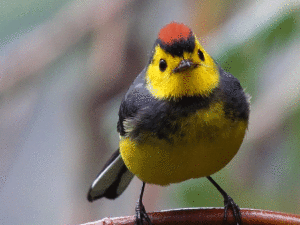With only 51,100 km2 (19,729 mi2), Costa Rica is considered one of the 25 most biodiverse countries on the planet. In this small territory, inhabit more than 500,000 species, this represents 6% of the world’s biodiversity.
However, only 18% is known, which means that in Costa Rica there are some 91,000-species identified. As a comparison in Costa Rica, there are 227 species of mammals, while in Sudan with 2,505,800 km2 (967,494 mi2), it houses 267 species of mammals but to a much greater extent.
Significant Biodiversity
There are a large variety of species in the fauna of Costa Rica among them have been discovered;
- Mammals: (227 species) There are four species of monkeys: the capuchin, the howler monkey, the spider monkey and the saimiri (Squirrel monkey), the Dantas, the manatees, lots of bats species, and felines, such as the jaguar, the puma, and the ocelot. Plus, 30 species of marine mammals.
- Birds: (more than 800 species) Parrots, amazons, macaws, eagles and other birds of prey, etc.
- Reptiles: A large number of snakes, crocodiles, alligators, and turtles.
- Amphibians: Frogs and toads (a total of 183 species).
At the Central American level, Costa Rica ranks first in amphibians; second in plants, birds, mammals; and third in reptiles and fish.
Between vertebrates and plants have been identified about 13,091 species, which is the second-largest variety in Central America.
Read also: 8 in 1 real affordable Costa Rica highlight
Costa Rica is estimated to be the country with the highest number of species per unit area, with 1.8 species per km?.
In all vertebrate groups and the group of plants, Costa Rica is one of the firsts in 35 sites (the most species in each group). Thus, in plants, Costa Rica is in 17th place; in amphibians, Costa Rica is ranked 13th; in reptiles, Costa Rica is ranked 20th; in mammals, Costa Rica is ranked 32; in birds, Costa Rica is ranked 23.
The causes of so much biodiversity in such a small country are as follows:
- Geographic location: Costa Rica is located in the south of Central America, in the Intertropical zone of the planet. The intertropical zones of the American continent harbor greater biodiversity than the other continents. In this way, 1 km2 of tropical rainforest in Costa Rica, hosts more species than 1 km2 of rainforest in Central Africa. Also the country of the Pura Vida! is very close to the equator, it is estimated that the countries closest to the equator are the most biodiverse. Thus, for example, the tropical rainforest of central Costa Rica (in an area of 51,200 km2 [463 mi2]) houses about 6,500 species of plants; while the Lacandon Jungle of the Mexican state of Chiapas (in an area of 9,600 km2 [3,706 mi2]) houses about 3,000 species of plants.
- Two coasts: The fact of having two coasts (the Caribbean Sea and the Pacific Ocean) causes Costa Rica to have many more marine species than other countries.
- Altitude: The height range of Costa Rica is very broad ranging from sea level to 3,820 m (2373 mi) of altitude. This causes the country to develop very different ecosystems. So, in the low plains of the Caribbean, the rainforest is given, while in the areas of greater height of the Cordillera de Talamanca gives the vegetation of tundra.
. (2014).?Biodiversidad de Costa Rica.[Weblog].?Retrieved. 8 September 2017, from: https://es.wikipedia.org/wiki/Biodiversidad_de_Costa_Rica






